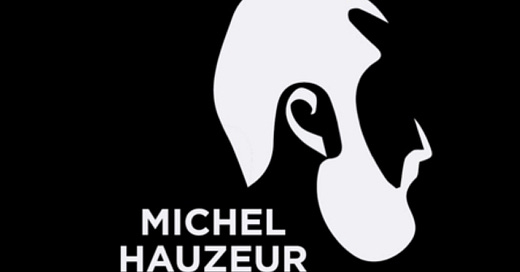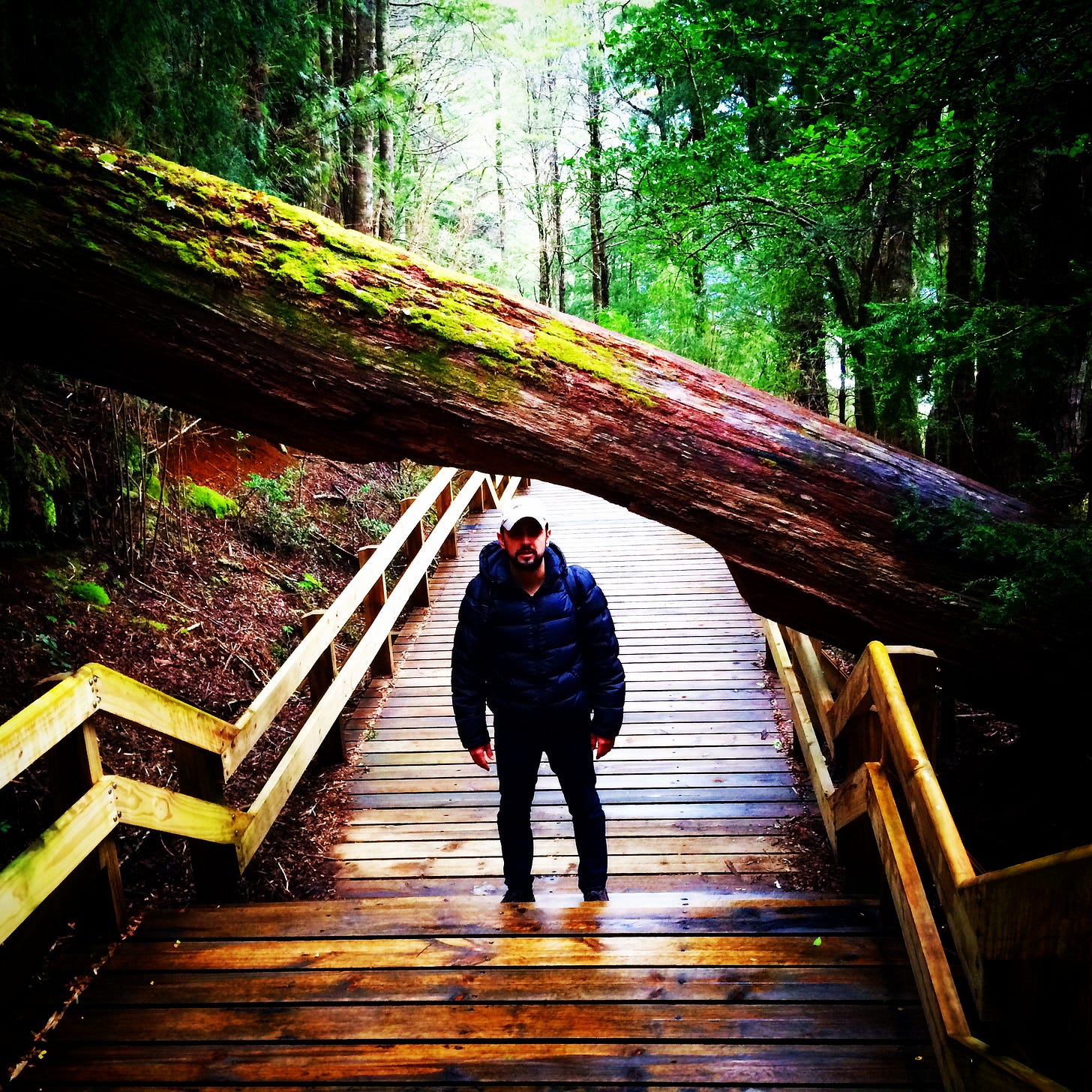How to create a team structure based on innovation and experimentation - Chapter 2
This is a six chapter journey where I will share my process to get into an ideal structure.
Hi readers, my name is Michel Hauzeur, and I am a soccer lover and a father of my little warrior called Mila and Baloo (rescued dog)
Currently Product Design & Innovation Leader at Nearsure with 14+ years of experience in product & tech. I’m also a Co-founder of La corte de los Búhos, a Digital Transformation consulting company in Latam.
Mentor in the Product League and Product Makers Mentors program for 2+ years.
And 2023 Product-Led Alliance Award as Product Leader of the Year winner.
Six chapters journey:
Chapter 1: Understand the Why
Chapter 2: Research and hypothesis validation (This article)
Chapter 3: Team Building Validation
Chapter 4: Team building implementation
Chapter 5: Center of Excellence definition
Chapter 6: Innovation and Experimentation through team building
Before to start, I want to thank you for reaching the second chapter!
Let´s continue…
Chapter 2: Research and hypothesis validation
Section 1. Transform results into a hypothesis
In Chapter 1, I talked about “Understand the Why” and the importance of gathering sufficient information to make smart decisions. Read the Chapter 1 here
Just to recap, let’s remember my 5 main goals:
Create a Product Team
Define processes
Design a Career Path
Define Services
Work with sales
This information will be important to create the hypothesis.
Now, let´s answer the information recap in the “Understand the Why” template. Access to the template here.
Company´s Objective: Reach continuous growth by expanding the presence in North, Central, and South America, and Europe.
Company and Team Vision: Create a structure of studios that support the business units.
Desire Outcomes: Reach ARR 50 Million USD
Product / Services Description: Software Development, Platform Implementation, and Staffing.
Users / Stakeholders: C-level, Studio Leaders, and Practice leaders
Processes Impacted: Acquisition, Onboarding, Adoption, and Expansion.
Distributions: Sales Led, Account Management, Referral, and we expect to open a new channel of Product Led Sales.
Enablers and Drivers: Website, POCs, Free Assessments, Experts, Low rates, etc.
Data: North Star Metric, conversion rate, LTV, Churn Rate, etc.
Budget and Business Model: NA / Product-Led-Sales
Just to clarify, I manage one studio that represents some cross-services, but in the end, reaching the outcome of USD 50 million is a balance between new and active clients. And my studio represents a portion of this revenue in new and actual customers.
Section 2. Hypothesis Validation
The construction of a hypothesis in a Product Strategy is based on the data you collected from the Users, Market, Stakeholders (Business), and Distributors (if applicable).
The process we apply is based on the following flow, designed by us at the company. Soon, we can talk about it.
Let´s build the hypotheses based on the information collected in Section 1. The following definitions are attached only to the studio I lead.
Team Structure
By creating a sense of community, we will increase the team NPS by over 85%.
By designing an ideal structure to support the company's goal, we will reach revenue of USD 5 million.
By identifying the seniority level of each team member, we will improve client NPS by over 15%.
Career Path
By understanding and identifying the seniority level of each team member, we will improve NPS by 85%.
By defining growth paths to support team members, the company, and the client´s goals, we will expand the account’s revenue to $2 million.
By aligning growth path vs salary ranges and getting a level of NPS internally over 85%.
Processes
By defining growth strategies, we will reach 50 new team members at the end of the year.
By defining sales strategies, we will improve conversion by 10%.
By training members´ team, we will expand the account’s revenue by $2 million.
New services
By designing new services based on PLG, we will reach a revenue of $3 million.
By designing new services based on the Pricing plan, we will reach a revenue of $2 million.
By designing new services based on Gamification, we will reach a revenue of $3 million.
Sales
By supporting and training the sales, we will improve conversion by 10%.
By creating new designs and disruptive proposals, we will improve conversion by 10%.
By creating a new product-sales-led channel, we will reach a revenue of $5 million.
Enjoy a beautiful view from Peulla, Chile, South America.
Section 3. The Results
If you remember Chapter 1, I commented I love to use two templates when I am doing the discovery, the “Understand the Why” template and the “Opportunity Solution Tree” from Teresa Torres.
The first template already was discussed, now is the time to apply the second one.
When you implement the Opportunity Solution Tree, from my experience and point of view, the most important thing is to follow the next process:
Identify the Problem and transform it into an outcome
Identify the opportunities (at least 3)
Select the opportunity that today has more probability of success
Identify solutions (at least 3)
Select the solution that today has more probability of success to transform it into an experiment.
Following these steps, let’s open the tree based on the solutions we can offer from a studio perspective.
Problem: The studio is not generating enough revenue
Outcome: Reach an ARR of 5 Million.
Opportunities: These are the hypotheses that have a better chance of success, based on our analysis.
Design an ideal structure to support the company's goal. (Goal 1:Team Structure / Point B))
Outcome: ARR of USD 5 million.
Analysis Results:
This hypothesis is required to support the new company´s structure and will help to organic and define a clear growth path.
This opportunity can absorb the following, by just creating the ideal structure:
Define growth paths, to support team members, the company, and the client´s goals. (Goal 2: Career Path / Point B)
Train member´s team will help to expand the account’s revenue. (Goal 3: Process / Point C)
Design new services based on PLG. (Goal 4: Innovation / Point A)
Outcome: ARR of USD 3 million.
Analysis:
This hypothesis can help to create a new way to offer our services and present our value first over monetization.
This opportunity can absorb the following, by just defining a PLG model:
Create a new product-sales-led channel (Goal 5: Sales / Point C)
Design new services based on the Pricing plan. (Goal 4: Innovation / Point B)
Outcome: ARR of USD 2 million
Analysis: This hypothesis can help to increase the consultancy offering.
Design new services based on Gamification. (Goal 4: Innovation / Point C)
Outcome: ARR of USD 3 million
Analysis: This hypothesis can help to increase the expansion strategy of the company.
After conducting an internal analysis, the decision was to implement Opportunity 1 first because for the studio and company was most important to define a structure that in the future will help to support the operations and the rest of the opportunities.
Solutions: Taking Opportunity 1 to define possible solutions.
Implement a team structure based on Business Units.
Implement a team structure based on practices (Product & Design)
Implement a team structure based on practices and innovation
After conducting an internal analysis, the decision was to implement Option C, because the company is looking for support but to have a team-leading innovation.
Experiment: Check Chapter 3 to understand the way we structure this experiment.
See you there!!!
Thanks for reading!!!
Don´t forget to save an spot here this coming 30th of May
Don´t close this tab before sharing this content.
I think of myself as a product, so please leave a comment so I can keep improving my content. Thanks!








